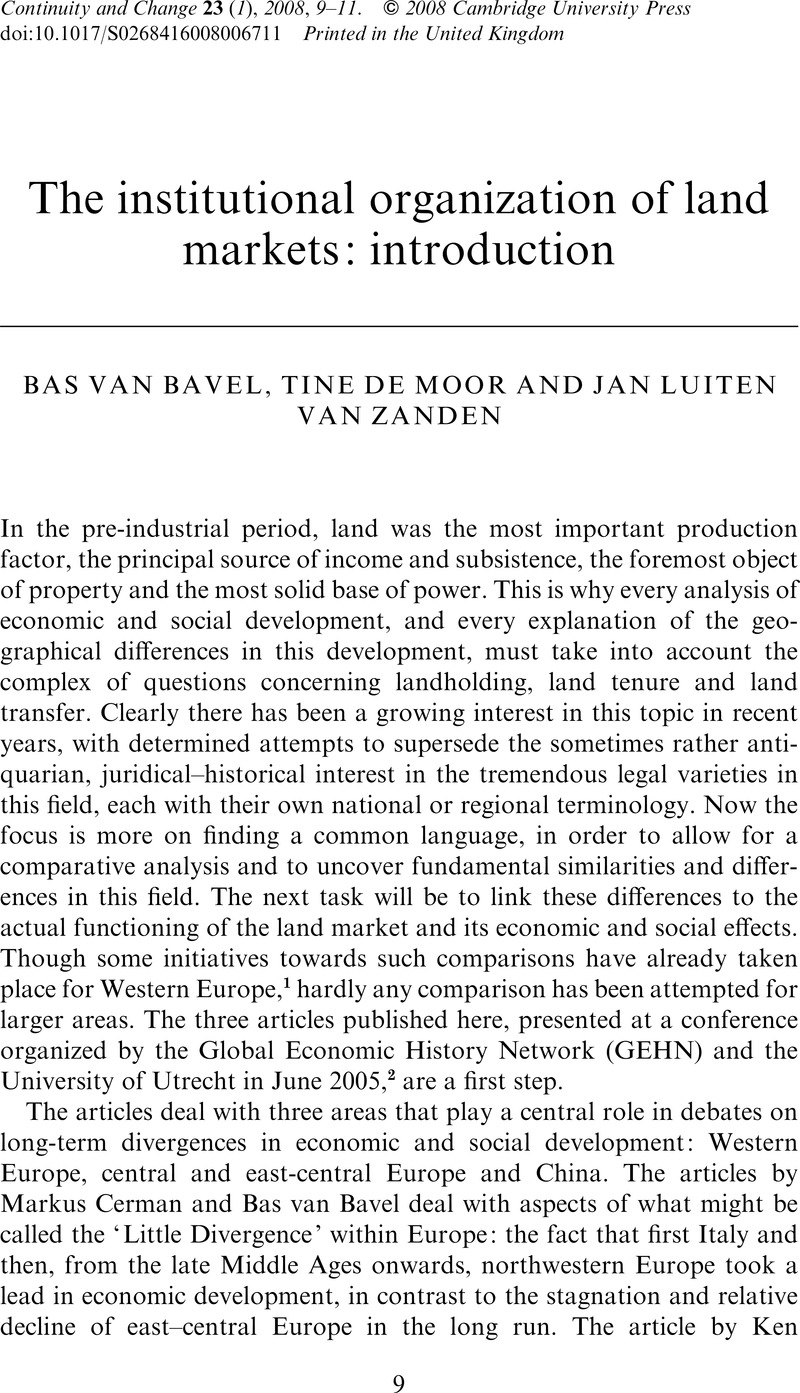Article contents
The institutional organization of land markets: introduction
Published online by Cambridge University Press: 04 April 2008
Abstract

- Type
- Research Article
- Information
- Continuity and Change , Volume 23 , Special Issue 1: SPECIAL ISSUE ON THE INSTITUTIONAL ORGANIZATION OF LAND MARKETS , May 2008 , pp. 9 - 11
- Copyright
- Copyright © 2008 Cambridge University Press
References
ENDNOTES
1 For two recent examples see L. Feller and C. Wickham eds., Le marché de la terre au Moyen Âge (École Française de Rome, 2005), and B. J. P. van Bavel and P. C. M. Hoppenbrouwers (eds.), Landholding and land transfer in the North Sea area (late Middle Ages – 19th century), CORN Publication Series 5 (Turnhout, 2004). The topic is also central to the European workgroup ‘Landed property’ of COST Action A35 (Programme for the Study of European Rural Societies).
2 We hope to present a more elaborated introduction to themes germane to this topic and to the broader topic of factor markets – the markets of land, labour and capital – in a future number of Continuity and Change, offering regional overviews of these factors markets in different parts of the world.
3 Those identified as members of this California School are, as well as Ken Pomeranz, scholars such as R. Bin Wong (UC Irvine) and Jack Goldstone (UC Davis). See the review article by Vries, P. H. H., ‘Are coal and colonies really crucial? Kenneth Pomeranz and the great divergence’, Journal of World History 12 (2001), 407–46CrossRefGoogle Scholar.
- 1
- Cited by


